Tamatha
Barbeau, Ph.D.
Professor of Biology
Coordinator: Veterinary Studies Program
Coordinator: Program for Undergraduate Research Experience (PURE)
Previous
Undergraduate Research Projects with Dr. Tamatha Barbeau
Tamatha
Barbeau, Ph.D.
Professor of Biology
Coordinator: Veterinary Studies Program
Coordinator: Program for Undergraduate Research Experience (PURE)
Previous
Undergraduate Research Projects with Dr. Tamatha Barbeau
| I have mentored 34 undergraduates research assistants including 3 senior honors students. Here are some of the cool projects we have completed together! |  Tam and some undergraduate researchers (Spring, 2004) |
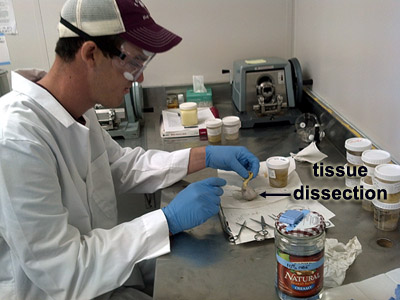 |
Brad
Phillips Francis Marion University, Spring 2012 Comparative testicular morpholgy among different breeds of domestic canines. |
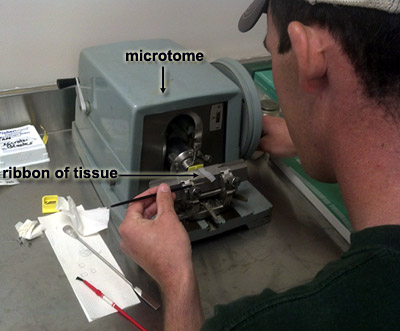 |
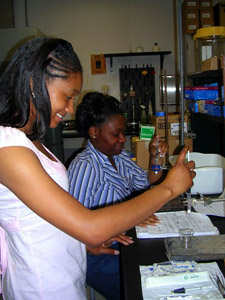 |
Anita
Fields and Haley Legette Validation of a cortisol and testosterone enzyme immunoassay (EIA) kit for examining unextracted urine and urine extracted with ethyl ether or methylene chloride. |

Anita Fields
and Haley Legette
Francis Marion University, Spring 2009
Validation of a cortisol and testosterone enzyme immunoassay (EIA) kit for examining unextracted urine and urine extracted with ethyl ether or methylene chloride.
 |
Alecea Manghi Validation of a oxytocin and progesterone enzyme immunoassay (EIA) kit for examining unextracted urine and urine extracted with ethyl ether, methylene chloride, or C-18 Sep Pak column chromatography. |
| Matthew
Maynard Francis Marion University Spring, 2008 Examining waterways at risk for contamination by pulp mill effluent in Florence County, South Carolina. Pulp mill effluent has been shown to alter endocrine function in aquatic vertebrates. For example, female mosquitofish exposed to pulp mill effluent exhibit an extended gonopodium (anal fin) - a phenotype typically found only in male mosquitofish. Thus, female mosquitofish appear to be "masculinized" by exposure to pulp mill effluent. Research has shown that pulp mill effluent can be broken down into androgens by bacteria found within the water (1). This indicates that the female fish have been exposed to a substance that acts as an androgen or testosterone-based hormone (2). In this study we will investigate a local pulp mill in Florence County to determine whether there are any waterways (i.e. lakes, streams, rivers, or ponds) that are at risk for contamination by effluent. |
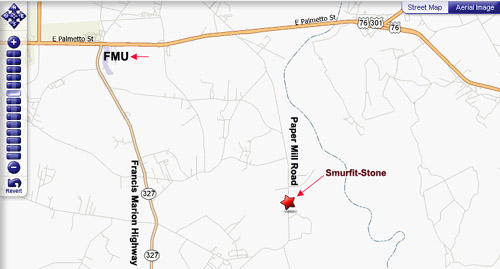 |
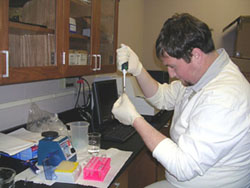 |
Matthew
McElveen Validation of a progesterone enzyme immunoassay (EIA) kit. |
 Stephanie holding a Slimy salamander found under a coverboard at a drift fence. |
Stephanie
Miller and Sara Brigman Monitoring reptile and amphibian diversity within disturbed and undisturbed woodland habitats using drift fences. |
 Stephanie (far right) helps me and two other student volunteers to install a drift fence that includes pitfall and PVC traps. |
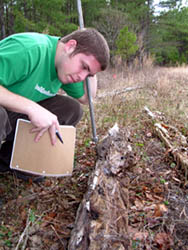 Taylor examining a Black Widow spider found underneath a log. |
Taylor Poston Reproductive morphology and field ecology of the Black Widow spider (Latrodectus mactans) in South Carolina. |
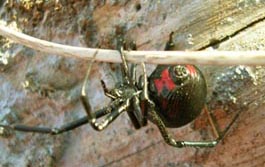 |
 |
Brittany
Newsome The effects of nitrate contaminants on testis morphology in Bullfrogs (Rana catesbeiana). |
|
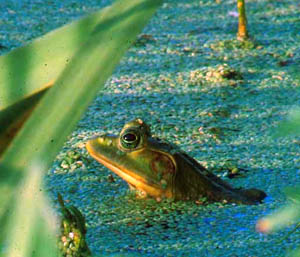 |
Emy Yarborough
and Kate Anderson Seasonal changes in oviduct morphology in wild-caught Pig frogs, Rana grylio, from a North-Central Florida lake. |
|
 Pam putting her oviduct samples in the histology autotechnicon. |
Pamela Moses
Seasonal changes in oviduct morphology in wild-caught Pig frogs (Rana grylio) from a North-Central Florida lake. |
 Caroline spending quality time on light microscopy. |
Caroline
Keicher University of Florida Oviduct morphology of Bullfrogs (Rana catesbeiana) in response to estradiol and growth factor surgical implants. |
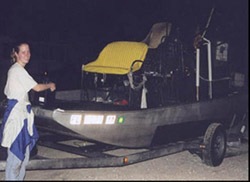 Mandy getting the airboat ready for our collection of Pig frogs on Orange lake, Florida. |
Amanda
Mulligan University of Florida Reproductive hormones in Pig Frogs (Rana grylio) exposed to environmentally relevant concentrations of nitrate and nitrite. |
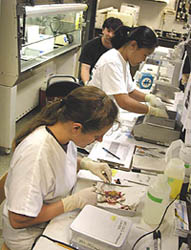 (The Dissection Team: Me in foreground, Kymee and Leo behind on right) |
Kymee Yo and
Leo Choe University of Florida Reproductive morphology and the identification of insulin-like growth factor 1 (IGF-1) in the oviduct of bullfrogs (Rana catesbeiana) using histochemistry and immunocytochemistry. |
 Picture of a slide showing the presence of IGF-1 (brown staining) in the oviduct of the female Bullfrog using immunocytochemistry (ICC). |
 (Axel is making friends with his research subject while Jason keeps working) |
Axel Lucca and
Jason Bridge University of Florida Reproductive hormones and tissues in wild-caught Pig frogs (Rana grylio). |
 Arika (left) and Brandy (right) separate follicles and stage them for in vitro culture. |
Arika Brown and Brandy Cunningham Reproductive hormones produced by in vitro culture of ovarian follicles in female African clawed frogs (Xenopus laevis) . |
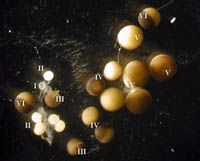 Ovarian follicles from X. laevis showing different maturational stages. |
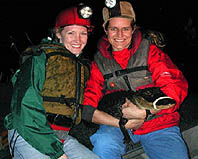 Amy (left) and I (right) encounter other "night creatures" like this American Alligator in Florida lakes while searching for frogs! |
Amy McGreane University of Florida Techniques for capturing female Pig frogs (Rana grylio) found in several North-Central Florida lakes. |
 Pig frog (Rana grylio) |
Written by Tamatha Barbeau, 2004. This web site is for educational purposes; if you own an image on this site and would like it removed or used with permission, or if you have comments, corrections, or suggestions, please contact me.